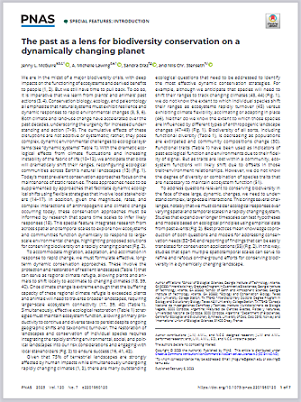
We are in the midst of a major biodiversity crisis, with deep impacts on the functioning of ecosystems and derived benefits to people (1, 2). But we still have time to pull back. To do so, it is imperative that we learn from plants’ and animals’ past actions (3, 4). Conservation biology, ecology, and paleontology all emphasize that natural systems must exhibit resilience and dynamic responses to rapid environmental changes (3, 5, 6). Both climate and land-use change have accelerated over the past decades, underscoring the urgency for increased understanding and action (7–9). The cumulative effects of these disruptions are not additive or systematic; rather, they pose complex, dynamic environmental challenges to ecological systems (see “dynamic systems” Table 1). With the dramatic ecological effects from climate fluctuations and increasing instability of the fabric of life (10–12), we anticipate that biota will dramatically shift their ranges, reconfiguring ecological communities across Earth’s natural landscapes (13) (Fig. 1). Today’s most prevalent conservation approaches focus on the maintenance of static reserves. These approaches need to be supplemented by approaches that facilitate dynamic ecological shifts using flexible strategies that involve local stakeholders (14–17). In addition, given the magnitude, rates, and complex interactions of anthropogenic and climatic change occurring today, these conservation approaches must be informed by research that spans time scales to infer likely responses (18).













